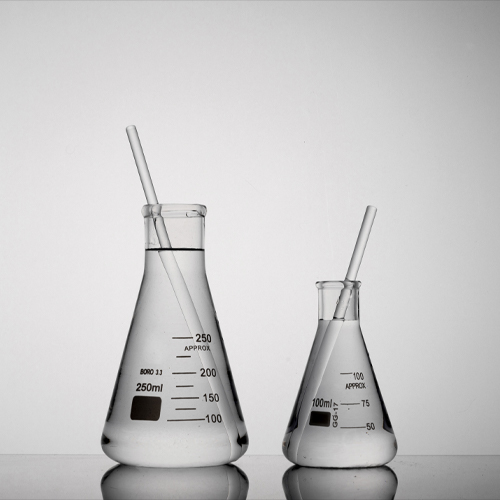Le néopentylglycol (NPG) est un composé chimique couramment utilisé dans la production d'une large gamme de produits, notamment des revêtements, des adhésifs, des plastiques et des fibres synthétiques. Cependant, des inquiétudes ont été soulevées quant à la sécurité du NPG en raison de ses effets nocifs potentiels sur la santé humaine et l'environnement. Dans cet article, nous explorerons la question de savoir si le néopentyl glycol est sûr, en examinant ses utilisations, les risques potentiels et les mesures réglementaires en place pour protéger les consommateurs.
Table des matières
- Introduction
- Qu'est-ce que le néopentyl glycol ?
- The Uses of Neopentyl Glycol
- Health Concerns Associated with Neopentyl Glycol
- Skin and Eye Irritation
- Respiratory Effects
- Carcinogenicity
- Reproductive and Developmental Effects
- Environmental Concerns Associated with Neopentyl Glycol
- Écotoxicité
- Persistence and Bioaccumulation
- Regulatory Measures in Place to Protect Consumers
- Occupational Safety and Health Administration (OSHA)
- Environmental Protection Agency (EPA)
- European Chemicals Agency (ECHA)
- Conclusion
- FAQ
- What products commonly contain neopentyl glycol?
- Can neopentyl glycol cause cancer?
- Le néopentylglycol est-il biodégradable ?
- How can exposure to neopentyl glycol be minimized?
- Should I be concerned about using products containing neopentyl glycol?
Qu'est-ce que Néopentyl glycol?

Néopentyl glycol, also known as 2,2-dimethyl-1,3-propanediol, is a colorless, odorless, and water-soluble organic compound. It is produced by the reaction of formaldehyde and isobutyraldehyde and is used as a building block in the production of polymers and resins.
The Uses of Néopentyl glycol
Neopentyl glycol is used in the production of a wide range of products, including coatings, adhesives, plastics, and synthetic fibers. Its high solubility in water and low volatility make it a popular choice as a solvent in the manufacturing process. It is also used as a cross-linking agent to improve the durability and strength of coatings and adhesives.
Health Concerns Associated with Neopentyl Glycol
While neopentyl glycol is widely used in industry and commerce, concerns have been raised about its potential health effects. Here are some of the key concerns associated with neopentyl glycol:
Skin and Eye Irritation
Neopentyl glycol can cause skin and eye irritation in some people who come into contact with it. It is important to wear protective clothing and gloves when handling products containing neopentyl glycol to avoid skin irritation.
Respiratory Effects
Exposure to neopentyl glycol can cause respiratory irritation and may lead to breathing difficulties in some people. It is important to use products containing neopentyl glycol in a well-ventilated area to minimize the risk of inhalation.
Carcinogenicity
There is some evidence to suggest that neopentyl glycol may be carcinogenic, or cancer-causing, in animals. However, there is currently no evidence to suggest that it is carcinogenic in humans.
Reproductive and Developmental Effects
Studies have shown that neopentyl glycol may have negative effects on reproductive and developmental health in animals. However, there is
currently no evidence to suggest that it has similar effects on human reproductive health.
Environmental Concerns Associated with Neopentyl Glycol

In addition to potential health risks, neopentyl glycol may also pose risks to the environment. Here are some of the key environmental concerns associated with neopentyl glycol:
Écotoxicité
Neopentyl glycol can be toxic to aquatic life, especially in high concentrations. It is important to dispose of products containing neopentyl glycol properly to prevent contamination of waterways.
Persistence and Bioaccumulation
Neopentyl glycol can persist in the environment for a long time and may accumulate in the food chain. This can lead to potential risks for both wildlife and human health.
Regulatory Measures in Place to Protect Consumers
To protect consumers from potential harm, regulatory bodies around the world have established guidelines and regulations for the use of neopentyl glycol. Here are some of the key regulatory measures in place:
Occupational Safety and Health Administration (OSHA)
OSHA has established workplace exposure limits for neopentyl glycol to protect workers from potential health effects. Employers must ensure that workers are not exposed to levels above these limits.
Environmental Protection Agency (EPA)
EPA regulates the use of neopentyl glycol under the Toxic Substances Control Act (TSCA). Companies must submit pre-manufacturing notices to EPA before producing or importing neopentyl glycol. EPA also sets limits on the amount of neopentyl glycol that can be released into the environment.
European Chemicals Agency (ECHA)
ECHA regulates the use of neopentyl glycol under the Registration, Evaluation, Authorization and Restriction of Chemicals (REACH) regulation. Companies must register neopentyl glycol with ECHA and provide information on its safety.
Conclusion
In conclusion, while neopentyl glycol is a widely used chemical compound, concerns have been raised about its potential harmful effects on human health and the environment. While there is some evidence to suggest that neopentyl glycol may have negative effects, regulatory measures are in place to protect consumers. It is important to handle products containing neopentyl glycol with care and dispose of them properly to minimize potential risks.
FAQ
- What products commonly contain neopentyl glycol?
- Néopentyl glycol is commonly used in the production of coatings, adhesives, plastics, and synthetic fibers.
- Can neopentyl glycol cause cancer?
- While neopentyl glycol may be carcinogenic in animals, there is currently no evidence to suggest that it is carcinogenic in humans.
- Le néopentylglycol est-il biodégradable ?
- Neopentyl glycol is not biodegradable and can persist in the environment for a long time.
- How can exposure to neopentyl glycol be minimized?
- Exposure to neopentyl glycol can be minimized by using products containing it in a well-ventilated area and wearing protective clothing and gloves when handling it.
- Should I be concerned about using products containing neopentyl glycol?
- While there are potential risks associated with neopentyl glycol, regulatory measures are in place to protect consumers. It is important to handle and dispose of products containing neopentyl glycol properly to minimize potential risks.



